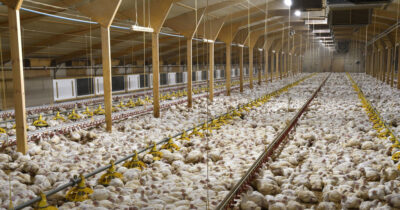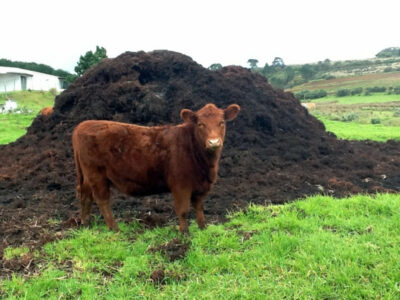Most people know that factory farming means a lifetime of suffering for animals and most people disapprove of it, and yet it is by far the most common way that animals are farmed in the UK. So, just how bad is it, and what are the alternatives?
What Is Factory Farming?
Factory farming is applying the principles and methods of industrialisation to living beings. Through mechanisation, automation, and the stack-em-high-sell-em cheap approach, it treats animals as though they were ball bearings or cans of beans. Through this system, every input and output is accounted for. And when profit is the only thing that matters, animals’ needs are disregarded. Want bigger birds? Genetically manipulate them to grow faster! Want more eggs? Leave the lights on and trick the birds into laying more! Want more milk? Impregnate that cow again almost as soon as she has given birth! In this pitiless system, the suffering of animals is almost immaterial. After all, there are profits to be made.
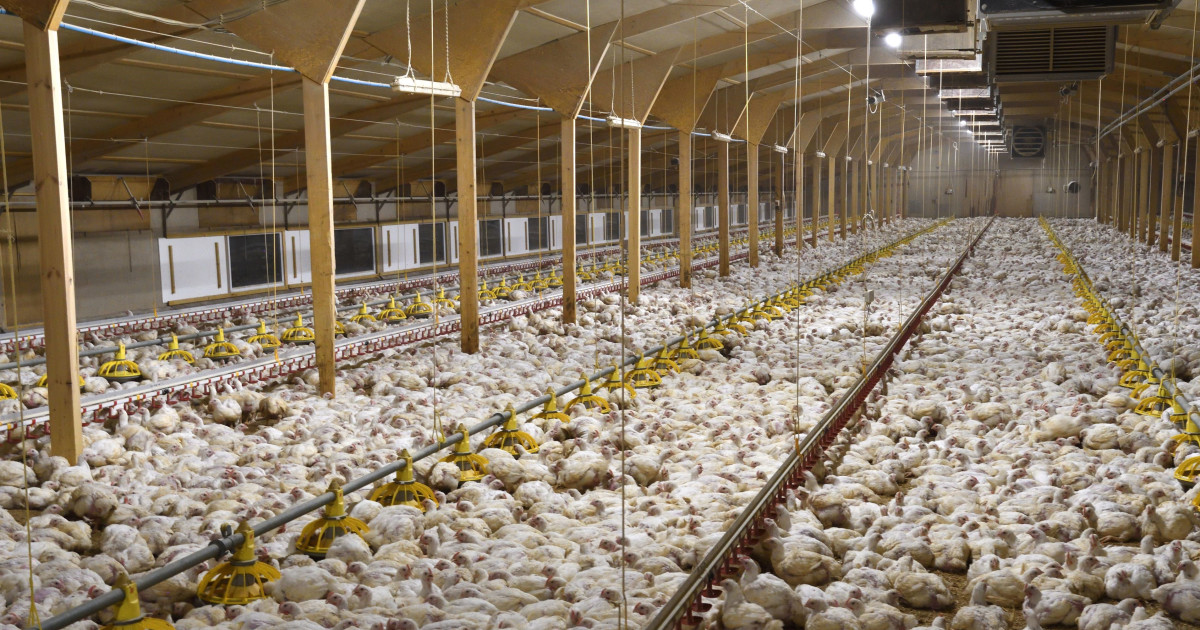
How Many Chickens Are Raised in Factory Farms?
Almost every chicken in the UK is bred and kept inside the factory farm system. Data shows that 1.12 billion chickens were slaughtered in the UK in 2021, and 95 per cent of those were factory farmed. And that’s just the birds who are slaughtered for their bodies (meat). Those figures rise when we consider the birds exploited for their eggs.
How Are Chickens Raised in Factory Farms?
Factory farms are horrific for all animals trapped inside them, but the exact system depends on the species, and on the reason those animals are being farmed. That means birds farmed for their eggs may experience different conditions to those farmed for their meat.
Layer Hens
Female birds who are farmed for their eggs are known as layer hens – they are defined by what humans want of them, not by who they are. This is a strain of chicken that has been genetically manipulated, and had the light, their feed, and all the conditions around them manipulated in order to maximise the number of eggs they lay. It doesn’t matter to the industry that laying an unnaturally large number of eggs can weaken their bones. It doesn’t matter to the industry that millions of day-old chicks hatched into the industry are killed because they are the wrong sex to lay eggs. And did you know that cages are not banned in the UK? The battery cage was banned, but the industry simply enlarged the cage size, put more birds in it, alongside a piece of dowling and a plastic curtain, and called it an ‘enriched cage’. The take-home message? Don’t trust the industry to clean up its act.
Broiler Chickens
These are the birds whose bodies are eaten, and they are named after a type of cooking – broiling. Profits grow when these birds grow as big as possible as quickly as possible, and so they have been genetically selected to do just that. In fact, they reach the size of an adult bird in just six weeks. They still cheep like chicks and have a chick’s blue eyes because, essentially, they are still chicks. This forced unnatural growth puts a huge strain on their legs and hearts, and their bones may break under the weight of those ballooning bodies. This is all calculated in the profit-and-loss sheet. So long as overall the system brings in more money, it doesn’t matter to the industry that millions of birds suffer to death right there in the sheds. The take-home message? Don’t trust the industry when it says it cares about animals.
How Are Chickens Treated in Factories?
They are treated as if their lives, needs, preferences, instincts, and wellbeing just don’t matter. Because to the industry, they really don’t.
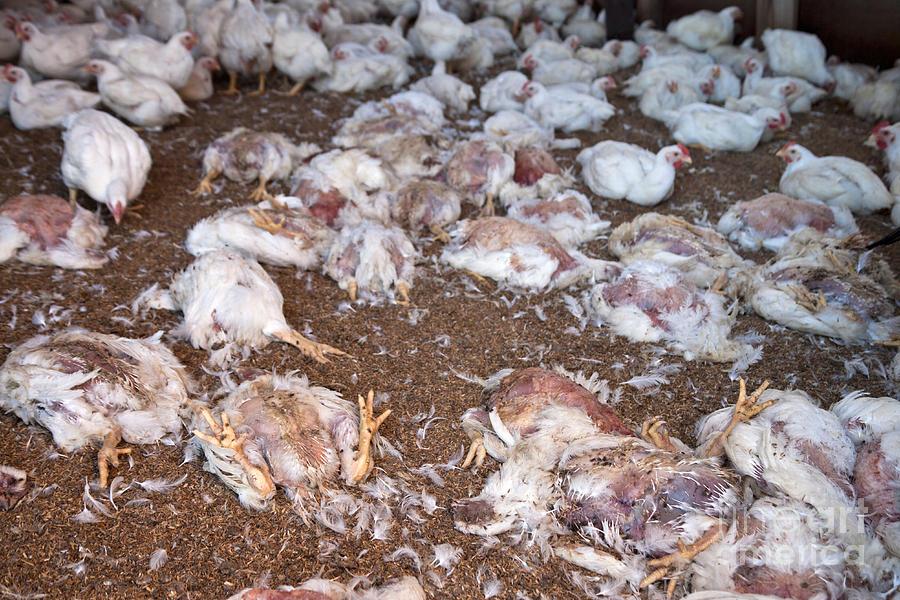
Confinement In Battery Cages
In the UK, more than 16 million hens are in cages right now. They will spend their entire egg-laying lives inside that cage, and will only be released from it when they are no longer optimally profitable. On that day, they will be sent to slaughter. Inside the cages, the birds cannot perform any of their natural behaviours; they cannot nest, roost, roam, scratch in the earth, wing flap, dust bathe or fly. What a shocking way to treat a bird.
Crammed Inside Warehouses
The birds reared for meat are crammed by the tens of thousand inside industrial warehouses. There is nowhere for them to go and nothing for these bright and inquisitive birds to do. When their legs cannot hold them up any more, they slump into the caustic urine, which burns their skin. If their legs break beneath them, they are left to suffer. It is hard to imagine a more inhumane way to treat a living being.
Debeaking
Unsurprisingly, the conditions they are forced to endure cause great stress in the birds. They become frustrated and may take those stresses out on one another, just as we might if we were locked inside a room forever with dozens of strangers. But chickens’ beaks are sharp – they need to be for them to peck at food in the wild. So, when they peck each other, they can cause injury. Now, the industry doesn’t care about injuries so long as it doesn’t dent profits, but some of these injuries can be serious. The solution is obvious, right? Give the birds a meaningful life to reduce their stress. Wrong! The industry’s solution is to sear the ends off their beaks with a red-hot blade, which reduces the damage caused if they do peck. Yes, it hurts. Yes, it can cause lifelong pain and make eating impossible for some. So what?
Light Manipulation
Broiler chickens eat more during the daytime, so the industry had a brainwave. Let’s keep the lights on, pretend it’s day, and the birds will keep eating. They’ll get fatter quicker and we’ll get richer quicker too. Genius! Of course, in reality it just means that the birds get heavier, and experience more discomfort and pain.
There was a similar brainwave in the egg industry. Since birds lay more eggs in daylight, we’ll keep the lights on and trick them into laying more. They’ll lay more eggs, and we’ll get richer. Genius! OK, so all those eggs need shells, and all those shells need calcium, which is leached from the birds’ bones to supply it. OK, so they suffer more broken bones as a result – that’s a price the industry is willing to pay. But of course, it’s not them who is paying it.
Inhumane Treatment
The entire factory farming system is inhumane, but when we add workers into the mix, we often see another level of suffering. Investigations have shown workers throwing birds into the air and hitting them with baseball bats, and stamping on birds for fun. When we farm animals as though they were unfeeling objects, workers inevitably see them that way, too. Farming animals robs them of a life worth living, but it also robs us of our empathy and compassion. No one wins.
What Are Chickens Fed in Factory Farms?
Chicken feed is a highly processed product, created from imported crops, including soya grown on deforested Amazon lands. In the case of broiler birds, it is formulated to make them put on weight fast; in the case of birds farmed for their eggs, it is formulated to keep them alive with the bare minimum of nutrients so they can lay lots of eggs without eating too much food. Either way, it is a far cry from their natural diets.
The Truth About Chicken Farms
We cannot trust the industry to tell us the truth about chicken farms. Look what happened when we visited the exact same farm that McDonald’s used in their own promotional film.
INSERT KFC FILM
How Long Do Chickens Live in Factory Farms?
If the birds are being reared for their bodies, then they will live just six weeks. The birds farmed for their eggs are kept alive for 18 months. After that, it is cheaper to kill them and bring in younger birds who are not yet exhausted and broken, and can therefore lay more eggs.
Are Chickens Given Antibiotics on Factory Farms?
They are. The conditions are so awful that in order to keep a profitable number of birds alive as long as possible, antibiotics are regularly used. These drugs prop up the factory farming system, in fact two thirds of all antibiotics used globally are in farmed animals. But the damage they do to people is immense. Because of their overuse in farms, antibiotic-resistant bacteria are starting to emerge. These “superbugs” are already killing large numbers of people. A world without factory farming would be good for people and animals.
How Many Eggs Does a Factory Farmed Chicken Lay?
Naturally, hens would lay up to 20 eggs a year but on farms they are forced to lay 300. That takes a huge toll on the birds and contributes to their early breakdown. At this point, the birds are said to be “spent” and they are killed.
What Happens to Male Chicks in Factory Farms?
If male birds are hatched into the meat industry, they are forced to live inside vast warehouses with all the other birds. If they are hatched into the egg industry, they are considered worthless because their bodies cannot be monetised. So, the male chicks are killed – they are gassed to death or minced alive.
How Does Factory Farms Affect the Environment?
Not only is animal farming bad for animals, it is bad for the planet, too. All farmed animals eat more calories in feed than can be gotten from their meat, which is why Chatham House calls animal agriculture “staggeringly inefficient”. To feed the 90 billion animals inside farms, we have to grow so much feed that we just don’t have the farmland available to do it. This is what is driving deforestation – as that land is taken away from nature and converted to farmland.
Another key problem is that animal products generate a huge amount of climate-altering emissions. Chicken, for example, is three times as bad for the climate as tofu.
And what about all the waste that those animals make? All that poop has to go somewhere. But there’s just too much of it. It gets into the air where it causes respiratory disorders in people who live close by, and it gets into the waterways, creating toxic conditions in which wildlife dies.
There really is nothing good to say about the factory farming system.
How Are Factory-Farmed Chickens Killed?
Inside broiler farms, any bird who is deemed to be growing too slowly (and therefore is not profitable enough) may be killed, often by having their necks twisted. Those who survive are rounded up at the end of their allotted six weeks of life, and shoved into crates. The crates are then loaded onto trucks for transportation to the slaughterhouse. At the slaughterhouse, they may be gassed to death inside specially built chambers, or they are shackled upside down by their legs, dragged through electrified water, and then have their throats cut. They die through blood loss.
Is Factory-Farmed Chicken Bad For You?
All processed meat causes cancer, so eating chicken nuggets or burgers or any similar products carries risks. And when it is cooked at high temperatures, such as roasting, frying or barbecuing, more cancer-causing agents (heterocyclic amines) are created. This is the same for factory farmed chicken, free range chicken, and all other meats. These concerns do not apply to vegan foods, including vegan fried chick*n.
Can Factory Farming Be Made Humane?
No. By its very definition it treats animals as factory components and disregards everything that they need to make life worthwhile. There is no such thing as humane factory farming
Conclusion
Chickens are harmed, exploited, and killed in far greater numbers than any other land-based animal on the planet. If you want to see a world where no animal is deliberately harmed, and when the planet is not poisoned and destroyed for our diets, then we can create that future and we can start right now, with your very next meal. And you don’t need to miss the taste of chicken – or cheese, burgers, ice cream, or anything else! There are vegan versions of all these things that give you the flavours and experience you love, but without the suffering and harm.
